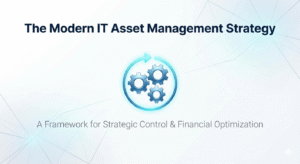Federal government agencies issue thousands of rules every year. Congress enacts hundreds of laws annually. New regulations sometimes replace existing ones and sometimes they add more layers of compliance complexity. If your business is required to follow these regulations it can seem overwhelming keeping up with all the requirements.
Penalties for not meeting industry compliance requirements can be steep. For example, violations of Health Insurance Portability and Accountability Act (HIPPA) rules surrounding protected health information result in penalties of $100 to $50,000 per breach, with a potential maximum penalty of $6 million per year.
Penalties of up to $1 million can be levied for violations of the Financial Institutions Reform, Recovery and Enforcement Act of 1989 (FIRREA). Thousands of Occupational Safety and Health Administration (OSHA) fines are issued in workplaces across the country, in amounts of a few hundred dollars to more than $1 million, depending on the severity and nature of the violation.
Given the extensive amount of rules, your business needs to comply with, staying up-to-date on compliance regulations is crucial. Knowing the new requirements also can be challenging. Here are a few suggested methods for staying on top of the changing requirements and keeping your company compliant.
Regularly check sites for updated standards
Make it a habit to regularly visit websites that post updated standards for your industry. The Centers for Medicaid and Medicare (CMS), Department of Labor and OSHA sites offer many resources and provide regularly updated information on compliance standards.
Join industry associations
Become a member of trade groups and associations connected with your industry. These organizations alert their membership to significant changes relevant to your business, and they usually can serve as a resource when you have compliance questions.
Attend trainings, conferences, and seminars
Whether online or in person, attend regulatory compliance training sessions and seminars as well as participate in conferences. You’ll expand your knowledge, learn new standards, get best practices for implementing the standards and connect with industry peers.
Designate a compliance officer
Consider appointing a designated person to handle your business’ compliance matters. At the least, designate a staff person tasked with regularly checking for updates to relevant regulations.
Use software solutions
Implement policy management software or Governance, Risk Management and Compliance (GRC) software that helps automate policy-related processes. Software can help centralize your company’s compliance information, making it easier to track. Software vendors also will update you on relevant regulatory changes.
Subscribe to newsletters
Sign up for mailing lists and newsletters issued by law firms, legislators, regulatory agencies, trade organizations, and other industry-specific groups. Don’t forget to actually read those newsletters so you get alerted to changes in compliance standards.
Outsource with experts
Partner with a reputable vendor who can provide expertise and up-to-date knowledge in a specific area of compliance. For example, outsource some HIPAA-related tasks to a company that will review your infrastructure and policies for compliance. Conducting an audit of your current practices can help identify areas of weakness in terms of compliance.
No matter the method you choose to follow, it is essential that you find ways to remain current on compliance requirements. Failure to keep up-to-date can cost your company in fines, penalties, and other serious consequences.





